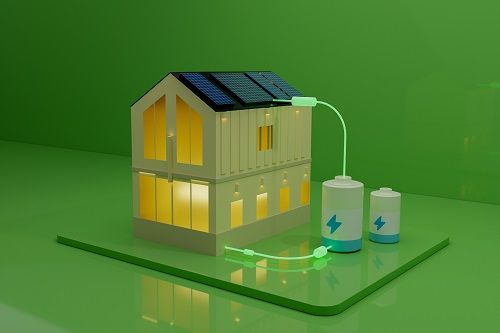In good times, you must stock up to ensure supply in bad times. This basic economic rule also applies to solar energy. Sometimes it is abundant, sometimes even overly so, while at other times it is scarce. "The solution to many of these problems is remarkably simple," says Patrick Lemcke-Braselmann, Co-CEO of aream Group SE. "A bold and, above all, rapid expansion of storage capacities and more flexibility: that's what the energy transition needs to be economically successful."
Solar energy is not produced evenly, leading to what’s known as the Duck Curve phenomenon in power grids. At midday, photovoltaic systems in Germany - now with over 100 GWp of installed capacity - often generate significantly more electricity than needed. Grid load, defined as electricity consumption minus renewable input, then drops to a minimum. From late afternoon, the load rises steeply as solar input diminishes and ends. These sharp dips in the load curve resemble the silhouette of a duck, hence the name "Duck Curve," and this brings multiple challenges.
Negative Electricity Prices: Around noon, the combination of high solar output and inflexible conventional power generation can lead to electricity oversupply, resulting in negative electricity prices. This significantly reduces income for solar producers while benefiting consumers. The grid is typically heavily burdened during these times.
Declining Revenues: In California, for example, the solar capture rate in 2024 was less than 30 percent of the baseload price. This means solar plants earned only about a third compared to the average electricity price.
California has shown how to respond to this development if the switch to renewables is to be supported: with massive investments in battery storage. Between 2020 and mid-2025, storage capacity rose from 0.5 GW to over 15.7 GW. This allowed excess solar energy to be stored during the day and fed back into the grid as needed in the evening. "As a result, price peaks and supply gaps are smoothed out, and fewer conventional power plants are needed," explains Lemcke-Braselmann. Another advantage: during heatwaves like those in 2022 and 2024, when air conditioning demand soared, blackouts were avoided. Grid operators did not need to urge consumers to save power.
Battery storage therefore makes solar power usable for longer during the day, enhances grid stability, reduces revenue losses, and lowers the need for grid expansion. Market development is further supported by falling storage costs, giving the storage sector an additional boost. "The California example clearly shows: those expanding renewables need storage, flexibility, and targeted development of grid infrastructure," says Lemcke-Braselmann.
And that applies here in Germany as well. In 2023, about 19 TWh of green electricity was curtailed primarily due to grid bottlenecks, about 4 percent of the total annual production. The result: climate-friendly electricity is wasted instead of being shifted to times currently served by conventional power plants. Conclusion: "Excess green electricity should be stored, not curtailed. Load management and smart grids must be promoted, and flexible consumers supported," says Lemcke-Braselmann. "Only in this way can the transition to low-carbon electricity production be achieved in the long term."
PRESSEKONTAKT:
Leandra Kiebach
T: +49 (0)211 30 20 60 4-2
E: lk@aream.de
